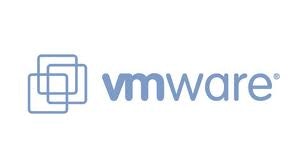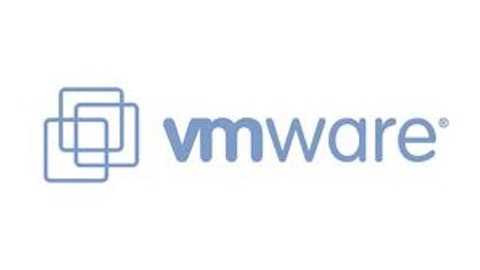Whenever I come across a stock that is trading at above-average expectations, I get nervous. The situation gets even more nerve-racking when there’s uncertainty in the industry that said company operates. For a while now, this has been the reason that I’ve stayed away from Red Hat, Inc. (NYSE:RHT), a company that I’ve always wanted to like but just can’t. Let me rephrase that: I like the company, I just hate the stock.

As evident by Red Hat’s price-to-earnings ratio of 68, which is four times that of both Microsoft Corporation (NASDAQ:MSFT) and Oracle Corporation (NASDAQ:ORCL), the Street cares very little about what I think. However, with Red Hat, Inc. (NYSE:RHT)’s fourth-quarter earnings due out on Wednesday, investors would be wise to lower expectations.
Will there be disappointment?
Although the problems of one company are not necessarily the issues of another, if Oracle Corporation (NASDAQ:ORCL)’s disappointing results serve as indication, investors should brace themselves for what Red Hat, Inc. (NYSE:RHT) has to say. Red Hat is coming off an excellent third quarter, during which revenue soared 18.5% year over year. Much of that was due to better-than-expected subscription and services revenue, which grew 19.3%.
Management attributed much of this growth to the company’s Red Hat Enterprise Linux, or RHEL, technologies. However, when looking back at what unfolded, a case can be made that much of the growth was also due to timing. Compare Red Hat’s Q3 performance to that of Oracle. Granted, these two are not often direct competitors, but in terms of the cloud and enterprise software, they compete pretty closely.
First, in Oracle Corporation (NASDAQ:ORCL)’s comparable quarter (Q2), the company posted a 17% surge in software licenses and cloud subscriptions, which (then) topped management’s own bullish projections. However, when looking back at Oracle’s Q1, software licenses and cloud subscriptions had only grown 5%. Oracle’s a great company, yes. But I don’t believe enterprises suddenly realized they needed more cloud services — not to the extent that it should have pushed Oracle Corporation (NASDAQ:ORCL)’s demand 12% from one quarter to the next.
Instead, here’s what happened; corporate budgets were about to expire. This, coupled with uncertainties related to the fiscal cliff, forced companies to accelerate their spending. Oracle was a beneficiary of this. You may consider this a stretch, but the evidence is there. And here’s another hint — why did Oracle’s management guide for a low-end of 3% license growth following a 17% performance?
This indicates that management knew that the 17% surge was abnormal. Unfortunately, even 3% guidance was too high of a target. In the recent quarter, Oracle Corporation (NASDAQ:ORCL) posted a 2% decline in software and cloud subscription revenue, sending the stock plummeting 10%. This tells me that revenue that ordinarily would have arrived in Q3 actually ballooned in Q2. Will it be the same for Red Hat?
Expectations for the quarter?
Red Hat expects Q4 revenue to come in the range of $347 million to $350 million, reflecting a year-over-year increase of 17% to 18%. In this environment, coupled with Oracle’s disappointing results and the soft guidance issued by rival VMware, Inc. (NYSE:VMW), I wouldn’t be surprised if Red Hat were to miss.
In terms of profitability, the company expects non-GAAP earnings to arrive in the range of $0.29 to $0.30 per share, with operating margin of 24.0%. The fact that there have been no revisions to guidance over the past 60 days means that management expects to report good numbers, or at the very least, numbers that are in line with expectations. But will this be good enough? Besides, Oracle Corporation (NASDAQ:ORCL) didn’t revise guidance, either.
Then again, even if Red Hat, Inc. (NYSE:RHT) were to report in-line results, the valuation is still too high. The stock is priced for a company that beats estimates and raises guidance. Though I have been bearish, there are several factors that are working in Red Hat’s favor. The company’s revenue pipeline, also known as deferred revenue, has remained strong.
In the third quarter, management reported having $987.7 million in deferred revenue. This means that the company is able to offset any near-term revenue weakness with the strength of subscription renewals. This is what the Street sees and is presumed in Red Hat, Inc. (NYSE:RHT)’s valuation. I still disagree.
Things to consider
Valuation concerns aside, I’m willing to give Red Hat the credit it deserves for having built a strong business model. I do wonder, however, if Red Hat can duplicate its Linux success into other areas, because despite VMware, Inc. (NYSE:VMW)’s recent weakness in virtualization, Red Hat’s management has failed to effectively address this market. Meanwhile, Citrix Systems, Inc. (NASDAQ:CTXS) has been gaining share at VMware, Inc. (NYSE:VMW)’s expense — growing product and license revenue 17% .
What’s more, Citrix’s acquisition of Zenprise shows how badly Citrix wants to differentiate itself. Although Red Hat, Inc. (NYSE:RHT)’s Hypervisor has gotten some good reviews, I don’t believe management has invested enough to beat VMware, Inc. (NYSE:VMW)’s vSphere or Citrix’s XenDesktop. All of that said, the good news for Red Hat is that growth has not slowed. But there’s a first time for everything, and this quarter might be that time.
The article Did Oracle Just Signal an Earnings Miss for Red Hat? originally appeared on Fool.com and is written by Richard Saintvilus.
Fool contributor Richard Saintvilus has no position in any stocks mentioned. The Motley Fool recommends VMware. The Motley Fool owns shares of Microsoft, Oracle, and VMware.
Copyright © 1995 – 2013 The Motley Fool, LLC. All rights reserved. The Motley Fool has a disclosure policy.

